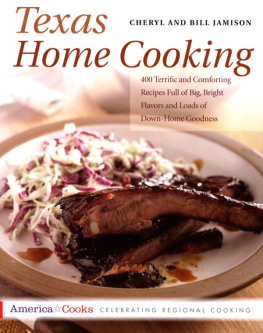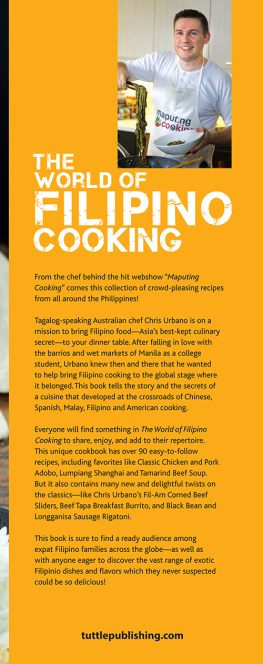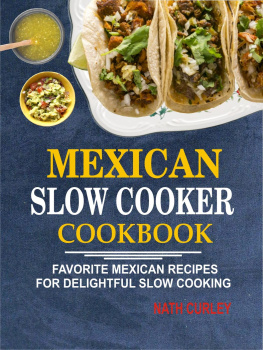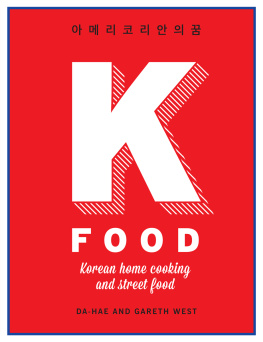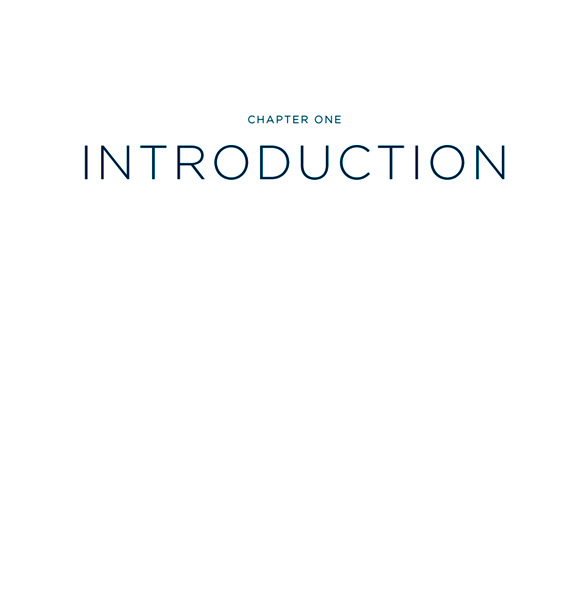In every mouthful of food lie hints of historypersonal and global. This book is a collection of those stories and recipes. It provides a window onto world cuisine from a contemporary American perspective; its also a portrait of my life as a working chef. I have always been and remain a chef who cooks. Most nights of the week I can still be found behind the line at annisa, expediting, cooking, and plating: It is where I am most at home.
ANITA LO, FROM THE INTRODUCTION
To Anita Lo, all cooking is fusion cooking. Whether its her slow-poached salmon, smoked paprika, spaetzle, and savoy cabbage from annisa, or the smoked chanterelles with sweet-corn flan that trumped Mario Batali on Iron Chef America, her food can always be distinguished by its innovative qualities and strong multicultural influences. Inspired by the flavors and textures shes tasted throughout the world, Anita Lo creates food that breaks down preconceived notions of what American food is and should be.
In Cooking Without Borders, Los long-awaited first cookbook, recipesincluding Appetizers, Soups, Salads, Mains, and Dessertsshow home cooks everywhere how easy it is to think globally and prepare innovative, delicious dishes. Presented by one of the most in-demand chefs of our time, these recipes celebrate the best flavors and ingredients from around the world. And at a time when access to international ingredients is greater than ever before, Cooking Without Borders provides the opportunity to enjoy these original elements at every meal.



In every mouthful of food lie hints of historypersonal and global. This book is a collection of those stories and recipes. It provides a window onto world cuisine from a contemporary American perspective; its also a portrait of my life as a working chef. I have always been and remain a chef who cooks. Most nights of the week I can still be found behind the line at annisa, expediting, cooking, and plating: It is where I am most at home .
I was brought up in the suburbs of Detroit, Michigan, with parents who had both emigrated from Asia. My father was from Shanghai and walked out of China at the beginning of the Cultural Revolution. My mother was from Malaysia; her family was part of a large population of people from the Fujian province who had immigrated to Kuala Lumpur and who, both linguistically and nationally, continue to define themselves as Chinese. When she arrived in the United States, her first stop was Tennessee, where she received her premed degree. My parents met in San Franciscoshe was interning at the same hospital where my father was a doctor. They both worked long hours as practicing physicians.
Our household was international. My father died when I was three and I grew up mostly with my stepfather, who came from Denver, Colorado, but spent much of his life in New England, teaching at both Harvard and the Rhode Island School of Design. His extended family had emigrated from Germany, and my siblings and I were raised on German nursery rhymes and visits to our tanta ancien in the Fatherland. My parents long work hours both afforded and required the presence of a nanny. Over the years, a variety of women lived in our home, and brought the tastes of their ancestry with them. The food smells of the American South, Mexico, and Eastern Europe all broadened my familys appetites.
A Hungarian Catholic nun, Sister Elizabeth Angel, stayed with us longest and had the most influence on me emotionally. She also left her mark culinarily. Growing up, my favorite meal was her chicken paprikash, a rich stew made with plenty of fragrant sweet paprika and sour cream and served with her handmade dumplings.
For me, family time together was defined by our moments at the table, where my parents shared their heritage through the meals they provided. My mother would work a full twelve- to fourteen-hour day at the hospital, then come home and often put five or six dishes on the table for us to eat. She was a great cook who imparted her love of food to all three of her children. And like my own cuisine, my mothers cooking came from all over the planet. She would labor with the same intensity over crisp Southern fried chicken as she would over a New England lobster dinner or Malaysian laksaa spicy coconut broth made with shrimp paste, lemongrass, and ginger, filled with noodles.
We were also lucky enough to take family vacations back to China, where the food tasted familiar because we regularly experienced its flavors in Michigan. My parents loved foreign travel. As a toddler, I journeyed to Malaysia and Tokyo. At the age of seven, I was pulled out of schoolalong with my brother and sisterfor a few months of roaming the world. Everywhere we went, we had to try the local ingredients and explore the scope of that countrys cuisine. In Iran, I remember drinking mouth-puckering sour yogurt, so cold it was crunchy with ice particles. In China, which we visited pre-Nixon (earning FBI files as a result) my uncles and auntsmy fathers brothers and their wivestreated us to elaborate banquets. In Belgium, my sister and I snuck off to get cones of frites between meals of mussels and stewed rabbit. There were dinners of reindeer in Copenhagen, and a boat trip in Sweden that had us facing daily smorgasbords filled with Scandinavian delicacies. The fact that all this tasting took place during my formative years was a vital building block for the success Ive found as a chef.
My first solo voyage took place when I was sent to high school in Concord, Massachusetts. Now, boarding-school food is nothing to write home about, but trips into Boston and visits to the homes of friends who came from far and wide allowed me to indulge my appetite and curiosity even further. The first time I had chilled sake was with a classmate from Japan (no, the school didnt allow this; we were nowhere near our parents and having a good time). My first fresh sugar-snap peas were eaten while staying at a classmates home on Long Island. We ate them raw during an afternoon picnic, with cold fried chicken; they were chilled, crunchy, and sweet, and when we popped them on our tongues, a little salt would travel up our noses as we caught whiffs of the neighboring beach. Just after graduation, a high school friend, who had grown up in France and whose mother was a food writer for the New York Times, introduced me to fried zucchini blossoms and roasted squab.
When Im standing at the stove, it is these bites that make the kitchen feel like home to me. Traveling the world, going to boarding school in New England, attending college in New York City, and, during that time, taking semesters abroad gave me a sense that my life had no borders. In the kitchen, I apply that mind-set to my cuisine.
In the 1980s, while I was in high school and college, American chefs became increasingly curious, and the term fusion made its appearance on the U.S. food scene. To me, the word described an emboldening of the American palate that was catalyzed by a collective embracing of other cuisines. Because of my multicultural upbringing, as far as I was concerned,
Next page


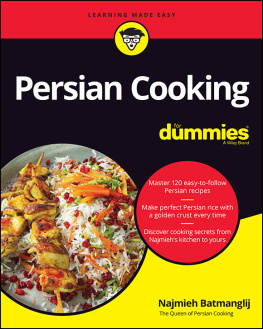
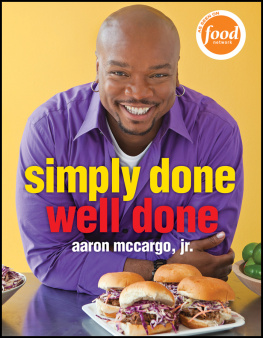
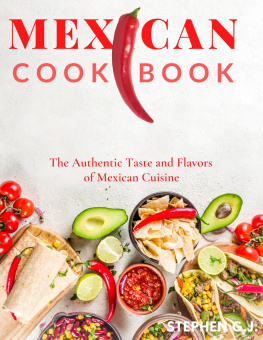
![Anita Jaisinghani - Masala: Recipes from India, the Land of Spices [A Cookbook]](/uploads/posts/book/320725/thumbs/anita-jaisinghani-masala-recipes-from-india-the.jpg)
